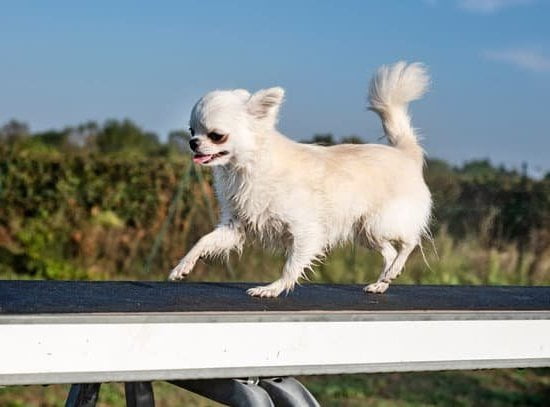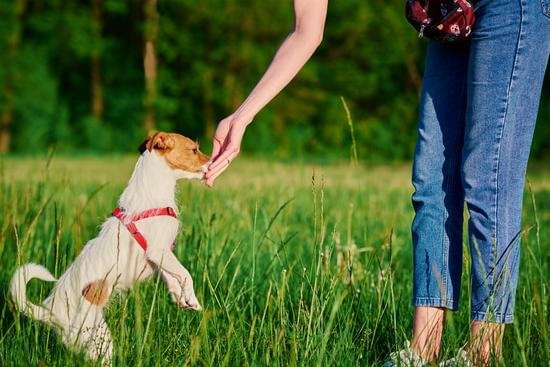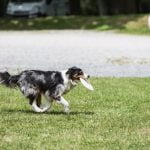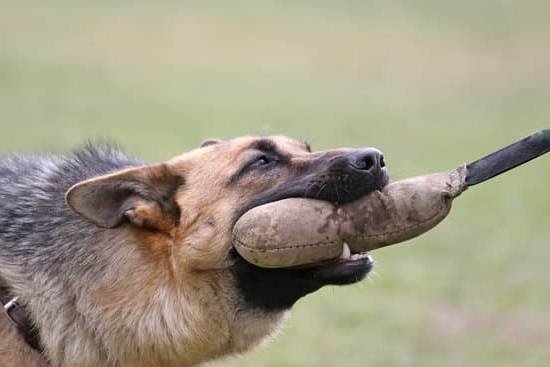Many dog owners are faced with the challenge of dealing with aggressive behavior in their canine companions, especially when it comes to interacting with other dogs. If you’ve been wondering “how to train my dog not to bite other dogs,” you’re not alone. Understanding the root causes of dog aggression towards other dogs is essential in addressing and preventing this behavior.
Recognizing the signs of aggression in dogs is crucial for effective training and management. Whether it’s growling, barking, lunging, or actual biting, being able to identify when your dog is displaying aggressive behavior will help you intervene promptly and appropriately. By understanding these cues, you can take proactive measures to prevent potential confrontations between your dog and others.
Socialization plays a key role in shaping your dog’s behavior towards other dogs. Exposing your furry friend to various social situations from a young age can help them develop positive interactions and reduce the likelihood of aggression.
Moreover, positive reinforcement training techniques combined with building trust and bond with your dog are essential components in modifying their behavior towards other dogs. By implementing consistent training methods and seeking professional help when needed, you can effectively teach your dog how to coexist peacefully with their canine counterparts.
Recognizing the Signs of Aggression in Dogs
Dogs can display aggression towards other dogs for various reasons, such as fear, territorial behavior, or resource guarding. It is crucial for pet owners to be able to recognize the signs of aggression in their dogs in order to address and prevent any aggressive behavior towards other dogs.
Some common signs of aggression in dogs include growling, baring teeth, snapping, lunging, and stiff body posture. If you notice any of these behaviors in your dog when interacting with other dogs, it is important to take action to prevent escalation.
Body Language Cues
Understanding your dog’s body language is key to recognizing signs of aggression. Dogs may exhibit stiff body posture, raised hackles, pinned-back ears, and a tense facial expression when feeling threatened or aggressive. It is important for pet owners to pay attention to these cues during interactions with other dogs and intervene before the situation escalates. By being attuned to your dog’s body language, you can proactively manage their behavior and prevent potential conflicts with other dogs.
Triggers and Context
Identifying the triggers that lead to your dog’s aggressive behavior towards other dogs is crucial in addressing this issue effectively. Whether it’s certain types of dogs, specific environments, or particular situations that provoke your dog’s aggression, understanding these triggers can help you modify their behavior through targeted training techniques.
By recognizing the context in which your dog displays aggression towards other dogs, you can create a training plan that focuses on desensitizing them to these triggers and promoting more positive interactions with fellow canine companions.
Consistent Training and Monitoring
Consistency is key when it comes to training your dog not to bite other dogs. Establish clear rules and boundaries for your pet, reinforce positive behavior through rewards and praise, and actively monitor their interactions with other dogs to intervene if necessary.
By consistently addressing any signs of aggression and implementing positive reinforcement techniques, you can help your dog learn appropriate ways to interact with others without resorting to biting or aggressive behavior. Remember that patience and persistence are essential in the training process, and seeking professional help may be necessary for severe cases of dog aggression towards other dogs.
Importance of Socialization in Preventing Dog Aggression
Why Socialization Is Crucial
Socialization plays a vital role in preventing dog aggression towards other dogs. When dogs are properly socialized from a young age, they learn to interact positively with other animals and humans. This exposure helps them understand appropriate behavior and communication cues, reducing the likelihood of aggression in new or unfamiliar situations. It is essential for dog owners to prioritize socialization as part of their training routine to ensure their furry companions can peacefully coexist with other dogs.
How to Socialize Your Dog
To socialize your dog effectively and prevent aggression towards other dogs, start by exposing them to various environments, people, and animals early on. Take your dog for regular walks in different locations, visit dog parks, participate in obedience classes, and arrange playdates with well-behaved dogs. Supervise these interactions closely and step in if any signs of aggression arise. Additionally, provide positive reinforcement such as treats or praise when your dog behaves calmly and appropriately around other dogs.
The Role of Socialization in Training
Proper socialization not only helps prevent aggression but also facilitates smoother training sessions overall. Dogs that are well-socialized tend to be more responsive to commands and cues from their owners. By ensuring your dog is comfortable around other animals, you create a foundation for successful training experiences. Remember that consistent socialization throughout your dog’s life is key to maintaining good behavior and preventing any potential issues with aggression towards other dogs.
Positive Reinforcement Training Techniques for Dog Behavior Modification
Aggression in dogs towards other dogs can be a challenging behavior to address, but with the right training techniques, it is possible to modify this behavior. Positive reinforcement training is one effective approach that can help teach your dog appropriate behaviors and discourage aggression towards other dogs. Here are some techniques on how to train your dog not to bite other dogs using positive reinforcement:
- Use treats: When your dog is in a situation where they may exhibit aggressive behavior towards another dog, redirect their focus by offering them a high-value treat. This will help create a positive association with the presence of other dogs.
- Clicker training: Clicker training involves using a clicker to mark desired behaviors and then rewarding the dog with treats. This method can be effective in teaching your dog to behave non-aggressively around other dogs.
- Desensitization: Gradually expose your dog to situations where they may encounter other dogs, starting with a distance where they remain calm. Reward them for calm behavior and slowly decrease the distance over time. This helps desensitize your dog to trigger situations.
Building trust and bond with your dog is also crucial in preventing aggression towards other dogs. By establishing yourself as a reliable leader and providing positive experiences during interactions with other dogs, you can help build your dog’s confidence and reduce aggressive tendencies.
Remember that consistency and patience are key when training your dog not to bite other dogs. It may take time for your furry friend to unlearn negative behaviors and adopt new ones, so stay committed to the training process.
If you find that your dog’s aggression towards other dogs persists or worsens despite your efforts, don’t hesitate to seek professional help from a certified canine behaviorist or trainer who specializes in aggression management. With dedication and the right guidance, you can help your dog become more sociable and friendly towards their fellow canine companions.
Building Trust and Bond With Your Dog to Prevent Aggression
Building a strong bond with your dog is essential in preventing aggression towards other dogs. A trusting relationship will create a sense of security for your dog, making them less likely to feel threatened or act aggressively. Spend quality time with your dog, engage in activities they enjoy, and show them love and affection consistently. Positive interactions between you and your dog will help build a strong bond based on trust.
In addition to spending time together, it is crucial to establish yourself as a calm and confident leader in your dog’s eyes. Dogs thrive on structure and consistency, so setting clear boundaries and rules will help them understand their place in the pack hierarchy. By providing guidance and leadership, you can prevent your dog from feeling the need to exhibit aggressive behavior towards other dogs as a means of asserting dominance.
Another important aspect of building trust with your dog is being mindful of their body language and communication signals. Understanding how your dog expresses fear, stress, or discomfort will allow you to intervene before a situation escalates into aggression towards other dogs.
By being attuned to your dog’s emotions, you can address any underlying issues that may be causing their aggressive behavior. Remember that patience and consistency are key when training your dog not to bite other dogs, so continue reinforcing positive behaviors while addressing any negative tendencies with care and understanding.
Techniques for Desensitizing Your Dog to Trigger Situations
When it comes to training your dog not to bite other dogs, desensitization techniques can be incredibly effective. Desensitization involves exposing your dog to situations or triggers that usually prompt aggressive behavior in a controlled and gradual manner. By doing so, you can help your dog learn to remain calm and composed even when faced with these triggers. Here are some techniques on how to desensitize your dog effectively:
- Identify trigger situations: The first step in desensitizing your dog is to identify what specific situations or stimuli provoke their aggressive behavior towards other dogs. This could be anything from meeting new dogs at the park to encountering certain sounds or movements.
- Create a safe environment: Once you have identified the trigger situations, set up controlled environments where you can expose your dog to these triggers safely. Make sure that you can easily control the situation and keep both dogs involved secure.
- Gradual exposure: Start by exposing your dog to the trigger situation from a distance where they remain calm and relaxed. Over time, gradually decrease the distance between your dog and the trigger while monitoring their reactions closely.
Desensitization requires patience, consistency, and positive reinforcement. It is important to reward your dog for displaying calm behavior during these sessions and never punish them for feeling anxious or fearful. With time and practice, desensitization can help your dog overcome their aggression towards other dogs and learn to respond calmly in potentially challenging situations.
Understanding the Role of Leadership in Managing Dog Behavior
Dogs are pack animals by nature, and within a human-dog relationship, it is crucial for the owner to assume the role of the leader. This is especially important when dealing with dog aggression towards other dogs.
By establishing yourself as the leader, you can help your dog feel more secure and confident, which in turn can reduce their aggressive tendencies. Being a strong and calm leader can give your dog a sense of safety and structure, making them less likely to act out aggressively towards other dogs.
One way to demonstrate leadership is through consistency in training and setting clear boundaries for your dog. Dogs thrive on routine and structure, so by consistently enforcing rules and expectations, you establish yourself as the authority figure in their eyes. In addition, providing mental stimulation through obedience training and activities like agility courses can help channel your dog’s energy in a positive direction, reducing the likelihood of aggression towards other dogs.
It’s also important to lead by example when interacting with other dogs. Your body language, tone of voice, and overall demeanor can influence how your dog perceives different situations. By remaining calm and assertive during encounters with other dogs, you set a positive example for your own pet to follow. Consistency in your actions will help build trust between you and your dog, ultimately leading to a more harmonious relationship with less aggression towards other dogs.
| Role of Leadership in Managing Dog Behavior | Importance |
|---|---|
| Demonstrating consistency in training | Establishes authority and reduces aggressive tendencies |
| Leading by example in interactions with other dogs | Builds trust between owner and dog |
| Providing mental stimulation through training activities | Channels energy into positive behaviors |
Seeking Professional Help for Severe Cases of Dog Aggression
When faced with severe cases of dog aggression towards other dogs, it is essential to seek professional help. Professional dog trainers or behaviorists have the expertise and experience in dealing with complex behavior issues in dogs. They can assess the root cause of your dog’s aggressive behavior and tailor a training plan that suits your dog’s specific needs.
Professional help can provide you with valuable insights into how to train your dog not to bite other dogs effectively. These experts can offer guidance on proper techniques, tools, and strategies to address the underlying issues causing aggression in your dog. They can also teach you how to interpret your dog’s body language and signals, allowing you to intervene before situations escalate.
In addition to training your dog, seeking professional help can also benefit you as a pet owner. You will learn valuable skills in handling and managing your dog’s behavior, promoting a harmonious relationship between you and your furry companion. Remember that seeking professional assistance is not a sign of failure but rather a proactive step towards bettering your dog’s well-being and safety.
Maintaining Consistency and Patience in the Training Process
In conclusion, training a dog not to bite other dogs requires consistent effort and patience from the owner. Understanding the root causes of dog aggression towards other dogs, recognizing the signs of aggression, and prioritizing socialization are crucial steps in preventing such behavior. By implementing positive reinforcement training techniques and consistently working on building trust and bond with your furry companion, you can effectively modify your dog’s behavior.
Desensitizing your dog to trigger situations and establishing yourself as a calm, confident leader are also key aspects of managing dog aggression. Seeking professional help when dealing with severe cases of aggression is always an option that should be considered. However, regardless of the approach taken, maintaining consistency in training methods and being patient throughout the process is essential for long-term success in curbing aggressive behavior.
In summary, patience, consistency, and dedication are paramount when it comes to training a dog not to bite other dogs. By following the outlined steps and remaining committed to the process, you can effectively address and prevent aggressive behavior in your beloved pet. Remember that every dog is different, and progress may take time, but with perseverance and positive reinforcement, you can help your furry friend become a well-behaved companion.
Frequently Asked Questions
How Do I Stop My Dog From Biting My Other Dog?
Intervening when your dog is showing signs of aggression towards another dog is crucial. Implementing positive reinforcement training can help redirect their behavior. Seeking professional guidance from a trainer or behaviorist may also be beneficial.
How Do I Train My Dog to Not Be Aggressive Towards Other Dogs?
Training a dog to not be aggressive towards other dogs involves socialization, positive reinforcement, and consistency in commands. Gradually exposing your dog to other dogs in controlled environments can help them learn appropriate behavior.
How Do You Discipline a Dog for Attacking Another Dog?
Disciplining a dog for attacking another dog should focus on correcting the behavior without using physical punishment. Providing consequences such as time-outs or redirecting their attention can help communicate that aggression is not acceptable. Seek advice from a professional if needed.

Welcome to the blog! I am a professional dog trainer and have been working with dogs for many years. In this blog, I will be discussing various topics related to dog training, including tips, tricks, and advice. I hope you find this information helpful and informative. Thanks for reading!





